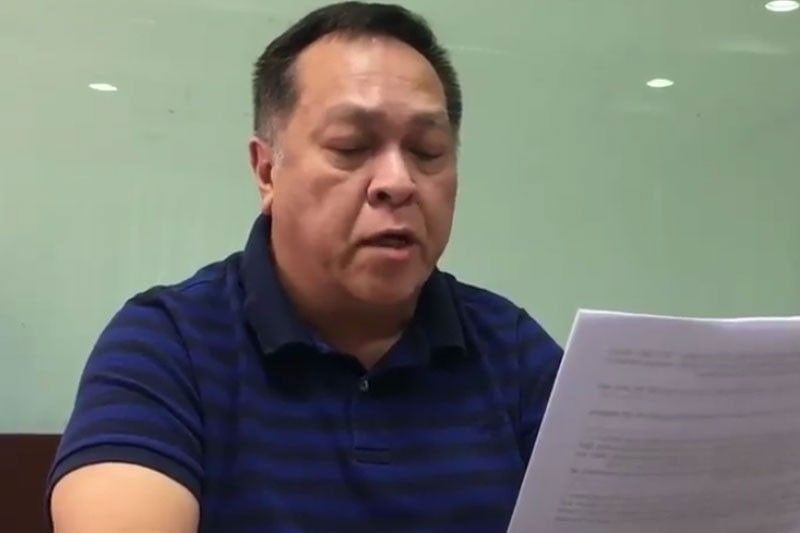Cuenco, Pesquera want BRT stopped

CEBU, Philippines — Instead of the Bus Rapid Transit (BRT) that is already considered an “abject failure” by countries that have already tried it, Cebu City Councilor James Anthony Cuenco yesterday requested colleagues to ponder on adopting instead “more viable solutions” to the city’s traffic situation.
Majority Floor Leader Jocelyn Pesquera was even more direct, saying she would push for the legislative body to support putting a stop to the Cebu BRT (CBRT).
In a privilege speech during their regular session, Cuenco, chairman of the council’s committee on transportation and communication, outlined the “red flags” he sees about the ongoing Cebu BRT (CBRT).
"I urge you, my colleagues, to consider redirecting our efforts and resources towards finding more viable traffic solutions. We could look into the completion of projects such as the Guadalupe to Lahug bypass road," he said.
He also identified a City of Naga to Danao City expressway; a coastal monorail system from Talisay City to the Mactan Cebu International Airport that passes through the South Road Properties, North Reclamation Area, and Mandaue City; as well as a Mass Rapid Transit subway system.
He began his speech by questioning the practicality of the “1996 edition” of the BRT system that is being implemented.
He said that it has been almost a year now that the BRT started, becoming the subject of "intense public scrutiny" due to the "massive" traffic gridlock that it causes to the public.”
"We may not even see the proverbial light at the end of the tunnel but rather complete chaos. I dare say that it is not cowardice but an act of bravery to admit that we made a mistake and correcting it at its earliest stage is paramount," Cuenco said.
Even though he CBRT is not finished yet, he said it is already manifesting the "symptoms" of the "failed" BRT systems in Hanoi, Vietnam; Bangkok, Thailand; and Delhi, India—countries that projected it as "abject failure."
In particular, Cuenco identified planning and implementation delays, as it was initially proposed 28 years ago yet.
He also presented the differences of the length and width of the lanes and the lesser space for those driving private vehicles, delivery trucks, and motorcycles.
He said that in Hanoi was similarly installed on narrow roads, operating only on a mere 14-kilometer stretch, which is similar to the CBRT Package 1 and Package 2, which covers 13.8 kilometers of road.
Cuenco likewise cited the CBRT’s "poor planning and design" because of the absence of access points to low-income neighborhoods.
"The design of the Cebu BRT has undergone numerous changes, yet appears to be inadequate, evident in the piecemeal solutions we currently face. We cannot even decide on a simple matter like what to do with the two skywalks impeding the ongoing construction, when this issue should have already been dealt with way before construction work began," he said.
He cited "centralized and unaligned bureaucracy" and taking too long to conduct public consultations as other downsides of the project. And now, he said, the contractor is asking for work suspension.
"OMG, for the nth time, more delays! When will this ever end? From the very start we all had to contend with the bureaucracy in Manila before we could see anything done here in Cebu," said Cuenco.
"The piece- meal or chop-chop solution approach is a terrible and stupid strategy," he said, adding that the budget has even ballooned to P28 billion from the initial estimate of P16.8 billion.
“As I end this speech, I shall deviate from the drill we all are accustomed to in privilege speeches and forgo with the usual motions, so that we may all absorb and reflect on the imminent action and decisions we will need to take on this impending catastrophe. In due time, when all these things that I have outlined shall have sunk in our minds, I shall endeavor to propose the appropriate resolutions,” Cuenco said in concluding his privilege speech.
During the discussion that followed, Pesquera agreed with Cuenco's points adding that from the very beginning she was already against the BRT.
She said the BRT system in Curitiba, Brazil, which former mayor Tomas Osmeña drew inspiration from for the Cebu BRT, succeeded for a specific period but later failed to address transportation concerns.
“I fully support the move of member Cuenco, that we really need, although he did not say in a categorical sense, to stop the BRT project. I would really push for the council to take a stand and stop the BRT project,” Pesquera said.
City Councilor Mary Ann De Los Santos then asked whether the data collected 21 years ago is still attuned with the present situation.
In response, Cuenco said that the point of his speech was that the data was taken more than 20 years ago, when the volume of vehicles on the roads was lower than today’s congested conditions, and therefore already outdated.
Discussion on Cuenco’s privilege speech concluded with City Councilor Nestor Archival requesting that they hold an executive session attended by the National Economic and Development Authority; Department of Transportation; and the World Bank, which financed the project along with the French Government.
The executive session was scheduled on Feb.7. — /RHM (FREEMAN)
- Latest
























